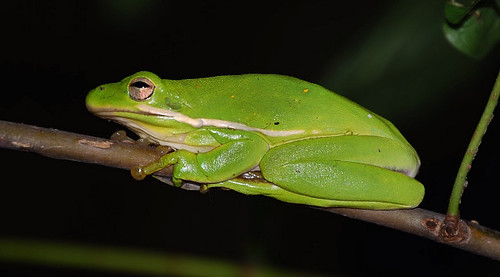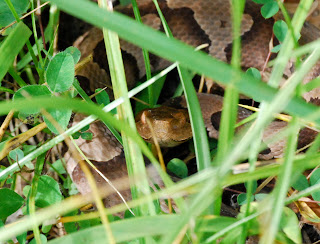I photographed this Northern Copperhead (Agkistrodon contortrix mokasen) in Murray County, GA. This is one of Georgia's six venomous snakes, five of which belong to the family Viperidae. These are called pit vipers due to their heat-sensing depressions(pits) on each side of the face. Look closely at the photograph above and you can see the "pit" between the eye and nostril.
The Copperhead is at home in forested habitats, especially where there is debris such as rocks, logs, and leaf litter that can be used for shelter. Their coloration and "hourglass" pattern makes excellent camouflage in these terrestrial settings.
Copperheads, like many snakes, have a wide variety of prey. Small mammals, such as mice are consumed often. The most common method of hunting is by ambush. This is basically "lie and wait." A method known as "caudal luring" is sometimes used by juvenile Copperheads. They wag their yellow tail tips to lure prey into striking distance.
This individual was approximately 20" in length. Its tail was tinged with yellow, so it has probably only recently matured. It did vibrate the tail-tip when I approached it. I would guess that it was 2-3 years in age. Copperheads do not lay eggs, but give birth to live young.
Though the Copperhead is one of the most feared snakes in GA, rarely does a bite prove fatal. Many bites are a product of negligence on the part of the human. These snakes will defend themselves if they feel threatened, so do not try to handle or harass them. For more information about this species
CLICK HERE.







